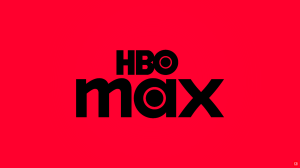Today sees the release of Get Naked from Image Comics‘ Man of Action imprint and writer Steven T. Seagle.
Videos by ComicBook.com
A series of illustrated, autobiographical essays, Get Naked is described as Seagle’s most personal work since the release of It’s A Bird…, which dealt with his family’s history of Huntington’s Disease while he struggled to write a Superman story for DC, comparing the Man of Steel’s invulnerability with his own looming sense of dread and mortality.

Here, Seagle and a number of talented artists from various different styles come together to look at the idea of nudity, and particularly Americans’ (and Seagle’s own) antipathy towards it.
Seagle joined ComicBook.com for a brief Q&A about the book.
The kind of confessional-autobiographical genre of comics was huge about 20 years ago but has largely disappeared from the mainstream. Are you consciously channeling that kind of work in Get Naked or were you just kind of making the project you had and some of it came out that way?
I was a fan of a number of the confessional comics of the late 90s – like Joe Matt’s Peep Show among others – but I wasn’t thinking of any of them when I wrote this book. Mostly because I didn’t set out to do auto-bio comics, I set out to do themed essays, and there’s a difference.
The essay form has a number of first-person-personal writers that I am a fan of and I was looking to those prose authors more than comics for inspiration.
How detailed were your scripts for this? Obviously much of this eschews the kind of traditional panel structure familiar to mainstream fans.
The scripts for this project were exactly the essays as you read them in the book. That was all the script I produced. I handed over complete visual control to the artists – intentionally.
I’ve spent a few decades being fairly detailed and specific in my asks for artists about page events (panels), and often the design or layout style in my scripts. This time I wanted to hand off that decision making to the artists and let them do as they saw fit – especially in terms of pacing.
I gave each artist a completed prose form essay, asked that they keep all text as is, asked that they move beyond huge chunks of text dropped into single illustrations, asked for a minimum of 10 pages, and asked that they make the text and art as symbiotic as possible.
Each artist took those limited guidelines, went off, and invented the form. Then we checked in during the process several times to turn up or turn down the “volume” on the techniques and elements they were employing to get a good balance.

How was the roundup of artists assembled, and how much were their individual styles tailored to the portion of the story where they worked?
The artists were already loosely corralled in that they all attend or had attended The Animation Workshop in Viborg, Denmark. I have spoken there a few times and I follow the work of the students in the Graphic Storytelling major online. I really liked what they’d done on a series of journalistic comics last year. Their inventiveness in that interpretation of non-fiction gave me confidence that they could crack the puzzle of what a “graphic essay” should look like. And they did – 19 different ways.
Some of these artists are folks that feel like they would be a hard sell in the mainstream American comics market. Was this anthology an opportunity to work with a variety of talented cartoonists that might not otherwise be found at Image?
Some of what I would consider to be the best artists working in comics don’t sell well in the mainstream, and that’s a pity. But it’s not because the artists aren’t amazing, it’s because the mainstream definition of “art” is too narrow for its own good.
That’s changing, though. I’m seeing more and more off-center artists crossing over and doing work for the big two. I would never have thought I’d see an Ed Piskor X-Men book in a million years, but Grand Design is out now!
That’s one of the best things about Image Comics and Eric Stephenson, though – they are always willing to publish books of many walks and looks and subject matters even in the face of mainstream norms. My last book for Image – Camp Midnight – was a summer camp story for kids. My new book is 19 drawn essays about getting naked around the globe. That’s a wide reach.
What made you think of the idea of doing an entire book of essays about nudity? Was it as simple as how puritanical the US is compared to the rest of the world?
Some of the writers I like a lot in this form – David Sedaris and Spalding Grey in particular – tell funny “true-life” stories in essay form. So I knew that I wanted to use myself as the lens for a specific subject matter. That idea of form came first.
After I’d worked on the nuts and bolts of how to write essays, I realized 3 of the first 5 I’d written had a common thread of nakedness – literal and figurative. I also thought that the word Naked on the cover of a book might jump out and give graphic essays a fighting chance of finding an audience. So I committed to that theme. America’s puritanical attitudes against nudity just served as extra rocket fuel during the launch of the writing.
Did you talk to John McHorny about using his name in the book?!
Some of the names of people in the book were changed and others were not. None of the likenesses of anyone were used, I just asked the artists to imagine the people in the essays as fictional characters and interpret them.

There are a lot of different locales used in the book, but mostly we don’t get that travelogue thing of the artists trying to make it obvious in backgrounds where the story is taking place with landmarks. Is that intentional?
I didn’t direct the artists to use or not use specific visual indicators for the different countries. So it’s interesting to me that not a single one of them went the route of “familiar landmarks” in their visual vocabulary. Perhaps there’s something about the non-US artistic point of view of countries that is less reductive…?
There are a lot of different kinds of media used in this book. Is there a style or medium that you would have liked to have represented, but didn’t make it in?
I’m always a fan for clay-mation. I would have loved it if someone had sculpted all of their characters out of play-dough and posed all the different scenes in miniature sets. But I guess that wouldn’t have been the most deadline friendly process.
There are very few — almost no — instances of nudity in this book that can be seen as sexualized. Was that something that you talked with your collaborators about, or did it flow naturally out of the narrative?
I have obviously been naked in sexual or sexualized situations, but I specifically wrote these essays away from that direction. I didn’t want to conflate nakedness with sexuality because I feel like that presumed overlap is how America got its wiring crossed about getting naked in the first place.
Once you are in a country that doesn’t have this erroneous perception that naked=naughty, you quickly understand there is such thing as non-sexual nudity. And it’s pretty awesome in terms of basic humanity and lifting the veil of body shame which is – for many in the US – an oppressive reality.
As for the artists, I told them that I wanted a book that would not be seized at the borders and kind of left it at that. Knowing that I appear naked in the prose descriptions, I also left it up to them whether to depict that or not – some did, some didn’t, and the only artist in the bunch who’d actually seen me naked at the Viborg swimming pool sauna, elected to keep me covered up. Make of that what you will!
***
You can pick up a copy of Get Naked at your local comic shop or on Amazon today. Digital copies are available through ComiXology.









